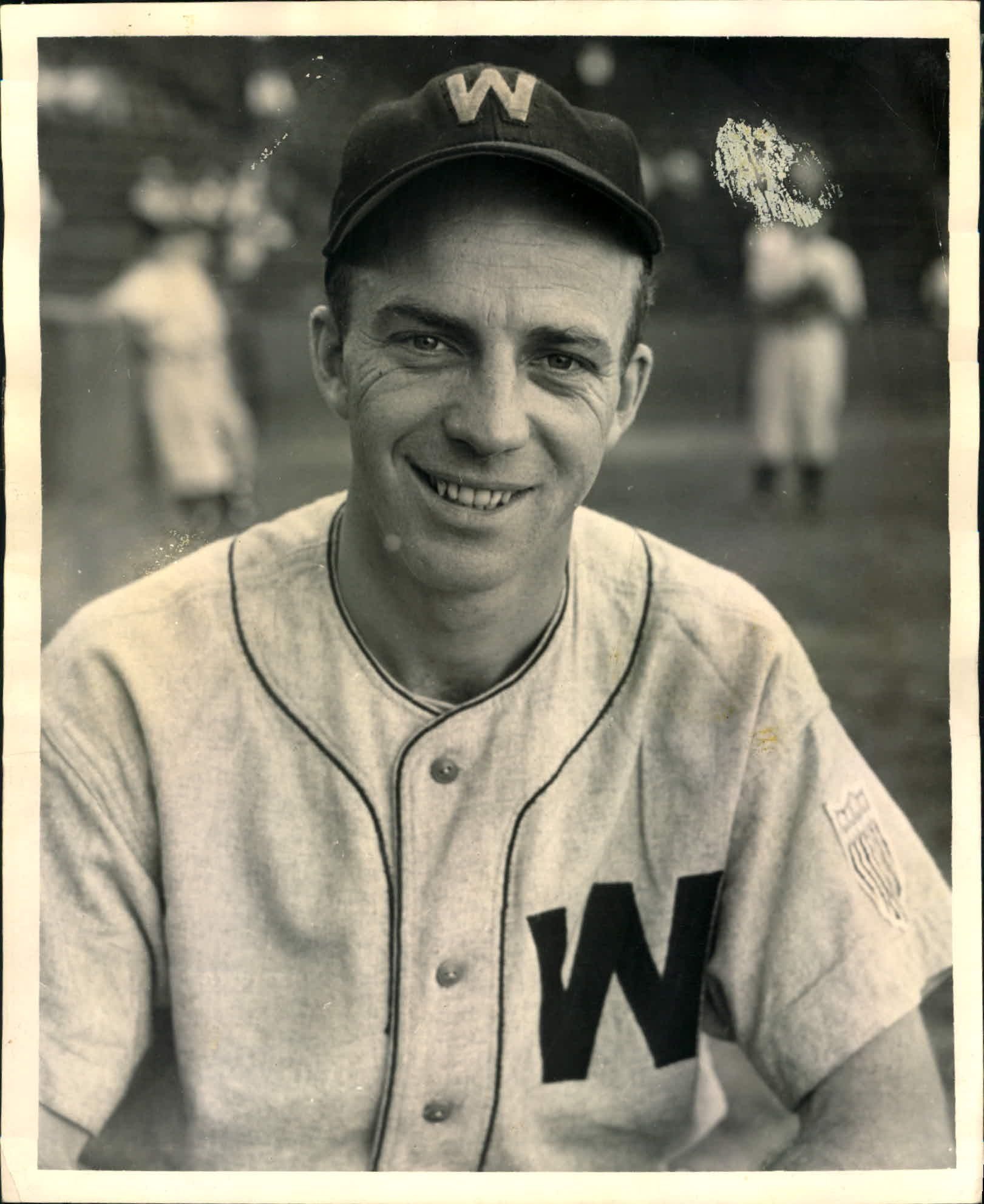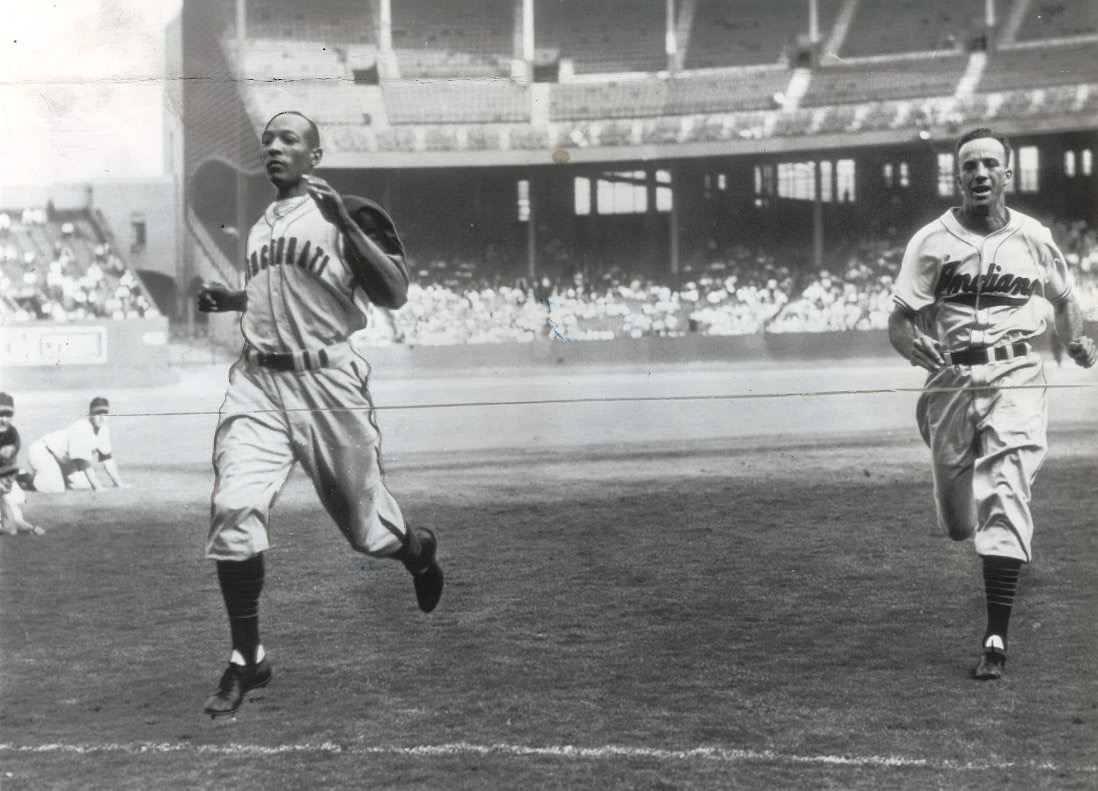George Case Stats & Facts
George Case
Position: Outfielder
Bats: Right • Throws: Right
6-0, 183lb (183cm, 83kg)
Born: November 11, 1915 in Trenton, NJ us
Died: January 23, 1989 in Trenton, NJ
Buried: Ewing Church Cemetery, Ewing, NJ
High School: Peddie School (Hightstown, NJ)
Debut: September 8, 1937 (8,293rd in major league history)
vs. PHA 4 AB, 0 H, 0 HR, 0 RBI, 0 SB
Last Game: August 3, 1947
vs. CHW 0 AB, 0 H, 0 HR, 0 RBI, 0 SB
Full Name: George Washington Case
View Player Info from the B-R Bullpen
View Player Bio from the SABR BioProject
Players Who Debuted Same Year
Coming Soon
All-Time Teammate Team
Coming Soon
Notable Events and Chronology
Biography
George Washington Case”George Case was the fastest man ever to play baseball,” declared Clyde Milan, who himself swiped 88 bags in 1912. “He was faster than Ty Cobb, Eddie Collins, [or] Max Carey.” Milan wasn’t alone in his assessment. Bill Dickey called Case “the most dangerous baserunner I’ve encountered.” Another Hall of Famer, Early Wynn, once said: “It seemed like he always started at full speed.” The stats more than back up the high praise. During one six-year stretch (1939-44), Case—aka “the speed demon of the Griffmen”—won five consecutive stolen base crowns and averaged 51 steals per 154 games played, an astounding number for the era. (Between 1921 and 1961, no one surpassed his 1943 total of 61 stolen bases.) He completely dominated the 1940s, finishing with 285 steals, 155 more than his nearest competitor (Snuffy Stirnweiss).
Once described by Clark Griffith as “another Cobb,” Case shared Ty’s views as they related to creating havoc on the basepaths. “Nobody can tell me that stealing bases—and plenty of them—doesn’t help the team,” declared Case. “When fast men are on the bases, pitchers get rattled.” Years later, “Mr. Lightning” explained: “I was their best weapon. I got green lights most other runners didn’t have.” While this certainly helped his cumulative stats, Case was quick to point out that opponents were “looking for me to run ever time I got on base.”
The speedy outfielder also ran pre-game races versus all comers, usually other players. These events were well-publicized and drew huge crowds. “During the war years, I ran more match races than anybody who ever put on a uniform,” Case once explained. “One year, I ran five races for purses, and the only guy that ever beat me was Jesse Owens.” The brainchild of Bill Veeck, the spectacle was set for September 1946, when an ailing Case—he suffered a string of injuries throughout his career—reluctantly agreed to square off with “the world’s fastest human” between games of a doubleheader in Cleveland. “Bill, you’ve got to be kidding,” exclaimed an incredulous Case, after being informed of his scheduled race versus the four-time Olympic gold medalist.
In the weeks prior to the event, Calvin’s News Service wrote: “Owens will race George Case . . . for a purse of $1,000. [They] will do the sprint over a straightaway in the outfield. . . . Jesse is the holder of the world’s 100-yard dash record, 9.4 seconds.” It’s true that Owens was ten years removed from his glory days in the 1936 Olympics, however, he was just three years older than Case. One expert prognosticator after another predicted an easy victory for the “Buckeye Bullet.” To the surprise of many, Case more than held his own. It was a photo finish (see comments section): Owens ran the 100-yard dash in 9.9 seconds, while “Galloping George” finished in 10 seconds flat.
In an interview (via e-mail) with Baseball Americana, the speedster’s son—George W. Case III—shared a story about meeting Jesse Owens in 1961. “George, your dad was so competitive,” declared Owens. “After our race, he said: ‘Come on Jesse let’s race around the bases.’ I told your father, ‘No way.’ He was the best in the world at that, I only run in straight lines!”
For those who think the elder Case was a one-trick pony, consider this: He hit .305 as a rookie in 1937; .302 with an MLB-best 51 steals (his nearest competitor had 23) as a sophomore; he rarely struck out; and averaged 28 doubles and 99 runs scored per 154 games played for his career. A good bunter and slap-hitting, leadoff man extraordinaire, Case legged out more than his fair share of infield hits. Though he stood six feet tall and weighed 185 pounds, George hit only 21 career home runs (all but one left the yard). However, the lanky righty occasionally swang for the downs. Durning a 1938 exhibition game in Florida, Case connected for what The Associated Press called “one of the longest home runs of all-time at Tinker Field. It was a terrific drive that cleared the distant left-field fence.”
Though at first derided for his defense, Case eventually turned himself into a fine big-league gardener. Splitting time between all three outfield positions, he ranked among the American League’s top five fly shaggers in at least 24 positive defensive categories during his 11-year career. In 1943, he paced AL right fielders with a .983 fielding percentage; he turned the trick as a left fielder in 1946, finishing with a league-best .980 fielding percentage. Case also possessed a good arm before injuring his shoulder; he compiled 21 outfield assists with the 1941 Senators. His career 2.06 range factor-per-game ranks 56th all-time among left fielders.
All told, Case spent parts of 11 seasons (1937-47) in the majors. For his career, he amassed 1,415 hits, 43 triples, 233 doubles, 21 home runs, 377 RBI, 785 runs scored, 349 stolen bases, and a .282/.341/.348 slash-line. Following his playing days, Case—a New Jersey native—served as Rutgers’ head baseball coach for over a decade (1950-60). He later took coaching jobs with the expansion Washington Senators and the Minnesota Twins, and also briefly managed in the Pacific Coast League.
Well-liked by teammates and generous to all who crossed his path, Case was a picture of humility. According to his son: “[D]ad often said to me, ‘If you are speaking with someone whom you’ve never met and you introduce yourself, if they don’t ask about baseball, don’t even mention the subject.’ ” Following a brave fight with emphysema, George Washington Case, age 73, died at his home in Trenton on January 23, 1989. “For his funeral, it was the wish of my family to have my dad’s service in the same church where he and my mother where married in 1937,” explained George Case III. “A few years later, when my mother passed away, her service was also held in the same church.”
“I never saw anybody get down to first base so fast. . . . Not only does he [Case] run fast and get hits for two men, but the boy uses his brains on the bases.” — Bucky Harris
@ET-DC@eyJkeW5hbWljIjp0cnVlLCJjb250ZW50IjoicG9zdF90YWdzIiwic2V0dGluZ3MiOnsiYmVmb3JlIjoiTGVhcm4gTW9yZSBhYm91dCB0aGUgdGVhbXMsIHBsYXllcnMsIGJhbGwgcGFya3MgYW5kIGV2ZW50cyB0aGF0IGhhcHBlbmVkIG9uIHRoaXMgZGF0ZSBpbiBoaXN0b3J5IC0gLSAtIC0gLSAtIC0gIiwiYWZ0ZXIiOiIiLCJsaW5rX3RvX3Rlcm1fcGFnZSI6Im9uIiwic2VwYXJhdG9yIjoiIHwgIiwiY2F0ZWdvcnlfdHlwZSI6InBvc3RfdGFnIn19@
Factoids, Quotes, Milestones and Odd Facts
Coming soon
Other Resources & Links
Coming Soon
If you would like to add a link or add information for player pages, please contact us here.



